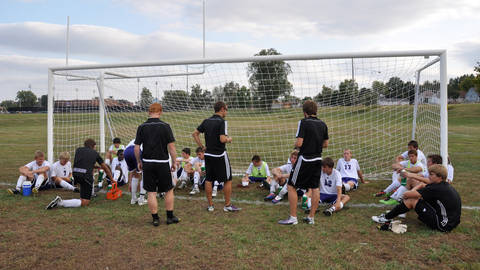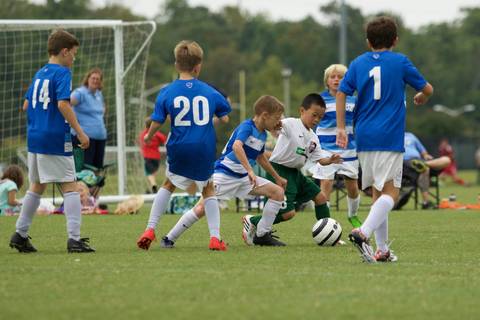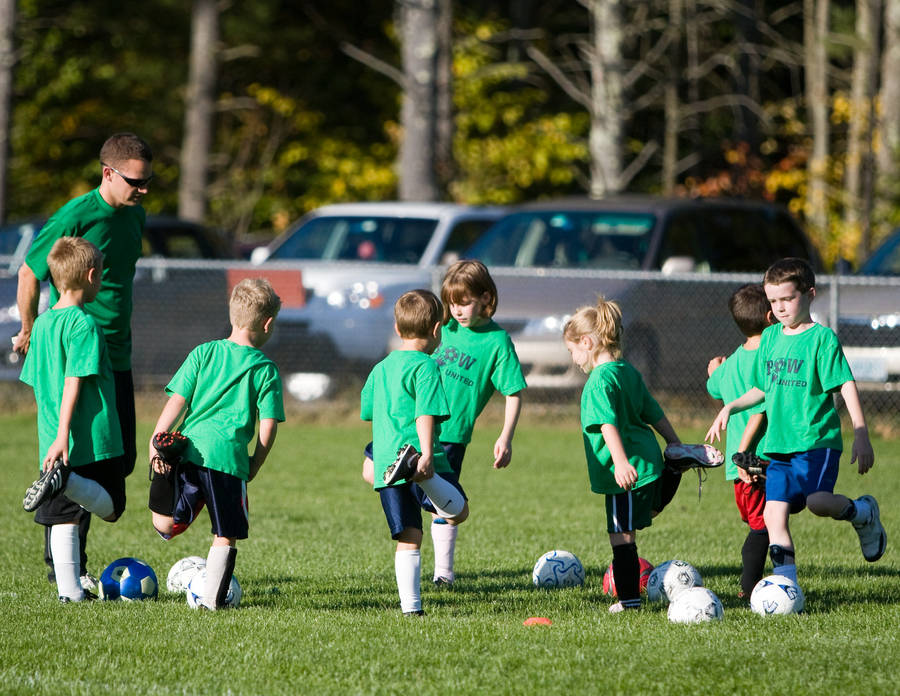
As we enter the final stretch of the season there is usually a lot to play for with most teams looking to improve their league standing, win a promotion or a cup.
As the season's end approaches, it is important that everyone keeps their heads and you find an effective strategy that’s based around your team’s age group, objectives, and performance so far in the season.

Before formulating specific tactics for the run-in, it is important to clarify the team’s objectives for the remaining matches. Your League position will have a bearing on that, do you need to secure a higher league position, avoid relegation, or are you competing for a title?
As ever, player development remains a crucial focus and prioritising the development of individual players' skills, tactical understanding, and teamwork set within the context of what the team needs to do in the run-in can be a great challenge for them.
You are always looking for the team’s performances to be on an upward trajectory but this can become really important during the run-in. You can focus on enhancing the team's overall performance and addressing any recurring weaknesses. Part of this process will be evaluating the team's performance throughout the season to date and identifying the strengths and weaknesses the team has displayed.
Consider the team’s ability to attack and assess their goal-scoring strengths and options. Has the team been effective at finishing chances? Have the players been creative in the final third? Have the team carried an attacking threat from set-plays?
Evaluate the defensive organisation and structure of your team too. Do the players organise and communicate well and limit the ability of the opposition to score goals? How committed are they to keeping the ball out of their net?
It’s also important to consider the team's adaptability to different formations, playing styles, and game situations all of which is set against the context of their age group. You should recognise that the tactics and strategies employed should be appropriate for the age group of the junior players you’re working with.
Work to tailor your approach to the players' technical skills and ensure they are capable of executing the required tasks effectively. Their physical capabilities play a part in that too and also their cognitive development. There is little point in devising a tactical plan that they are unable to understand or are physically incapable of delivering!
Utilise training sessions to focus on specific areas that require improvement and align with the objectives for the run-in. You can integrate tactical drills that simulate in-game scenarios, focusing on your specific strategies and game plans.
Incorporate set-pieces within this and allocate sufficient time to practice set-piece routines, both attacking and defensive, to capitalise on scoring opportunities and limit opposition threats. During the run-in, effective game management can become crucial to secure positive results.
Prematch planning can be done as at this stage of the season you will be familiar with your op ponents and their own strengths, weaknesses and preferred playing styles which will enable you to devise appropriate game plans.
Feeding in to your game management is your substitutions and player rotation. Can you strategically manage player substitutions and rotations to be as strong as you can while maintaining playing time for all players? Thinking this through can also help to maintain freshness, utilise different skill sets, and prevent player fatigue or injuries too.
Time and game situation management can also play a part. Teaching players how they can help to control the tempo of the game and manage time effectively can have a substantial effect. I’ve seen plenty of games won in the first 20 minutes by high tempo teams at the back end of a season.
Making tactical adjustments to this can help too. The run-in offers up its own mental challenges for players too and maintaining team cohesion and resilience is crucial. It’s really important to foster a strong mindset and encourage players to believe in their abilities and remain positive, even in challenging situations.
Team bonding activities can help to secure this and any social activities you are considering organising are well placed at this time in the season too. Any activity that promotes trust, communication, and camaraderie can only help you at this time. As ever, it’s important that players feel they have support during the run-in too when the pressure might be on.
Establish open lines of communication to address any indivi dual concerns a player might have and provide feedback and support when needed. Supporting your players with Individual training plans might be a good way of keeping them focussed during the season run-in.
You can tailor training sessions to meet a player's specific needs, focusing on important areas that require development or refinement that are likely to be important at this stage of the season. Providing regular and constructive feedback to players has its place within individual training plans and highlighting areas for improvement and recognising their strengths are all important.
You can even work with your players to collaboratively set targets for the remaining matches, promoting motivation and personal growth. For instance, if through your process of evaluation you identify that your team has had a problem with conceding goals from corners, you may wish to set your team as a whole the target of not conceding any more goals in this way for the last few matches of the season.
You can break down this strategy into individual roles for each of your players and work with them to give them the skills and knowledge needed to do this.
The run-in phase of a Junior Grassroots Football season presents a fantastic opportunity to maximise performance, achieve objectives, and further develop players. By analysing the season performance, defining your objectives and enhancing training sessions, implementing effective game management strategies, fostering mental resilience and supporting individual player development, teams can increase their chances of success during this critical period.
Ultimately, the f ocus should be on creating a positive and nurturing environment that allows young players to thrive, grow, and enjoy their football experience and a strong run-in the end of the season can only support this.

















